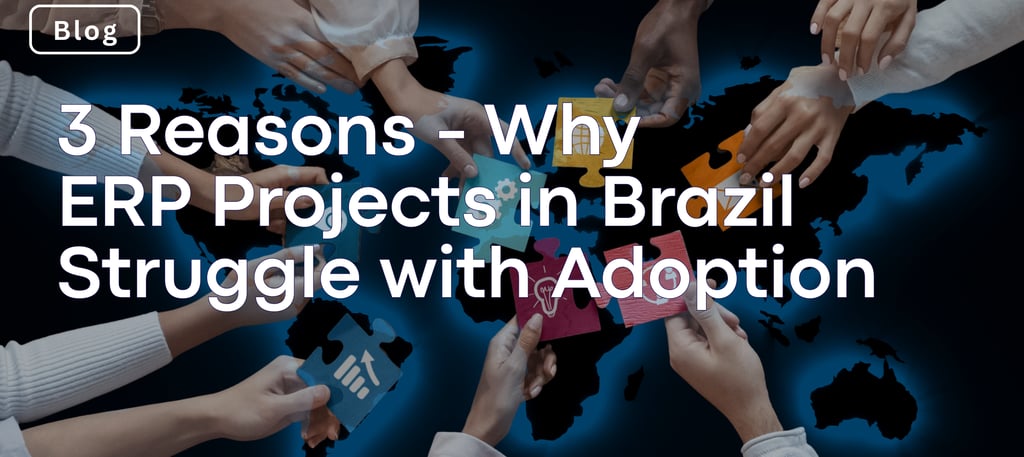3 Reasons Why ERP Projects in Brazil Struggle with Adoption
ERP adoption in Brazil goes beyond technology. Learn the 3 key challenges — and strategies to overcome them.
ASDM Solution – by Fabiana Pereira, Change Management Specialist
9/9/20252 min read


Introduction
ERP implementations are complex anywhere in the world. But in Brazil, the challenge goes far beyond system configuration. It’s not only about technology — it’s about navigating one of the most intricate tax and regulatory environments globally, while ensuring that people are truly ready to embrace change.
When multinational companies implement Dynamics 365 Finance & Operations in Brazil, success depends not only on technical capabilities but also on the alignment of people, processes, and culture.
Here are three of the most common reasons why adoption struggles in Brazil — and how leaders can overcome them.
1. Adoption Goals vs. Local Realities
In many global rollouts, ERP success is measured by gains in process optimization, visibility, and efficiency.
In Brazil, however, a significant portion of the effort is inevitably dedicated to meeting complex tax and regulatory requirements. As a result, even after a system goes live, it’s not unusual for users to maintain parallel spreadsheets or manual reconciliations to ensure compliance. While this provides reassurance, it also creates additional layers of complexity and slows down adoption.
The key is to define adoption goals early, and connect them to practical outcomes: reducing manual reporting, simplifying approvals, or improving process visibility. When leaders show how ERP can both secure compliance and reduce repetitive tasks, teams begin to view the system not only as a regulatory safeguard, but also as a tool that supports more strategic work.
2. Global and Local Work Styles Differ
ERP projects usually bring together global teams that set direction and local teams that bring deep operational expertise. Both groups add value, but their work styles often reflect different priorities.
Global teams (especially in Europe and the US) usually emphasize agility and concise communication, aiming to move quickly toward decisions.
Brazilian teams, on the other hand, often invest more time in building alignment through collaboration and context-sharing, ensuring that multiple perspectives are considered before moving forward.
Each approach has clear strengths. The challenge comes when expectations are not aligned: what feels like “moving fast” to one group may feel like “skipping important details” to the other.
The solution: Establishing upfront how decisions will be made and how information will flow helps bridge these styles. When global speed is combined with local depth, projects benefit from both efficiency and stronger adoption.
3. Trust Takes Time to Build
ERP adoption goes beyond training sessions. It requires trust — trust in the system, and trust in the people guiding the change.
In Brazil, trust is often built through relationships and shared experiences. If local expertise is not fully acknowledged, resistance can emerge quietly. Conversely, when teams feel included and respected, they often go further than expected to make projects succeed.
Collaborative workshops, where global specialists and Brazilian key users work side by side to solve real issues, are powerful opportunities to build this trust. Similarly, involving local representatives in steering committees and governance structures ensures that their perspective shapes key decisions.
This inclusion not only strengthens adoption but also fosters a culture of shared ownership. When trust is built into the process, adoption becomes more sustainable and long-lasting.
Final Thought
ERP projects in Brazil face unique challenges. The tax and regulatory landscape is highly complex, and cultural nuances require careful alignment. Yet, when approached with the right change management strategy, these challenges become opportunities to create more collaborative, resilient, and globally connected teams.
At the end of the day, successful ERP projects are not built on technology alone — they are built on people.
Next Step: Schedule a call with one of our experts.
